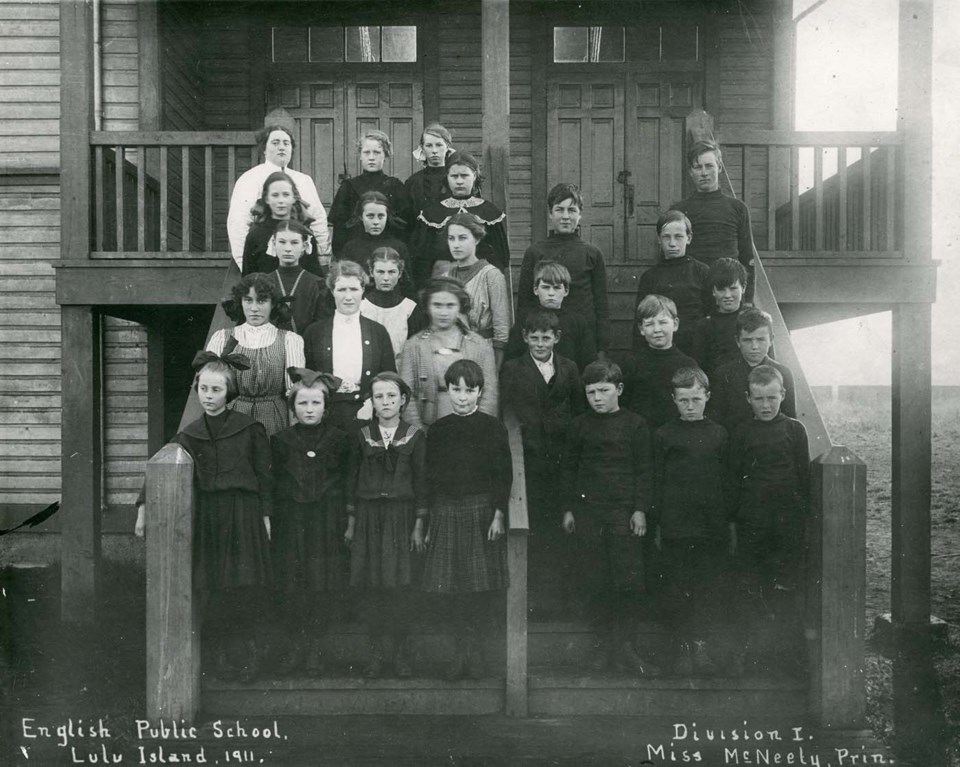Okay, I won’t go on a feminist rant.
That’s my normal go-to on International Women’s Day — as my family and friends can attest — but this year, I’d really just like to highlight some great women who had an impact on Richmond.
To use an old-timey word, these women were “spunky.” They were ahead of their time and seemingly fearless in a world dominated by men.
They seemed to forge ahead and buckle down to work at an age when most of us are still figuring out our lives.
Kathleen McNeely was 19 when she arrived in Richmond to teach at the English Public School on Steveston Highway in 1910. It wasn’t her first teaching job — she had already taught in Squamish before taking the Steveston position.
At 19, I was living in my parents’ basement and wouldn’t even see a university classroom for another year. And, after not digging the scene, I decided to bum around Europe for another couple years.
Meanwhile, at the age of 22, McNeely was principal of Bridgeport elementary. She wasn’t quite the first female principal in B.C., but I am sure she was darned-near a close second.
(By the time I was 22, I think I had finally made it to first-year university.)
And as if teaching wasn’t enough, McNeely stepped up during the 1918 pandemic when Spanish flu hit the west coast, volunteering as a nurse at a makeshift hospital set up in Minoru Park.
McNeely’s name is on a school in Richmond, along with war heroes like General Arthur Currie, Lord Byng and Colonel Burnett as well as Richmond pioneers like Charles E. London, Hugh McRoberts and Samuel Brighouse. (Ahem, I am sure Mrs. London, Mrs. McRoberts and Mrs. Brighouse had some part in their success in the Township of Richmond as well.)
But McNeely is one of only two women who have had a school named after them in Richmond (the other is Jessie Wowk).
Another great female character I learned about, thanks to our friends at the Richmond Archives, was Hide Hyodo. While she grew up in Vancouver and later settled in Toronto, a large part of her teaching career was in Richmond.
In 1926, at the age of 18, Hyodo landed her first teaching job at the Japanese school in Steveston even though she didn’t speak Japanese.
When the Second World War broke out, however, the lives of all west coast Japanese people were shaken up.
Hyodo described how when Japanese-Canadians were being detained at Hastings Park, she would wrap up her day of teaching and rush on the inter-urban tram from Steveston to Hastings Park to train high school students to teach primary grades. She needed to rush back to Steveston in time for curfew, all the while preparing to be evacuated herself.
Eventually, internment camps were set up in B.C., and Hyodo would travel between seven of them to oversee the schools set up for interned children.
In 1982, Hide received the Order of Canada for her work educating interned Japanese children.
I love that these two strong women dedicated their careers to education.
The Richmond Board of Education’s new chair, Sandra Nixon, spoke this week about the need for a culture that fosters women in leadership. Two of the last three superintendents were women and there are many women in leadership positions, as principals and in senior management, she pointed out.
We have a long way to go before we reach true equality, something that needs to be rammed through using tools like government policies and institutional change.
There are a lot of causes to fight and moral victories to be won.
But this International Women’s Day, I’d rather just celebrate remarkable women.




